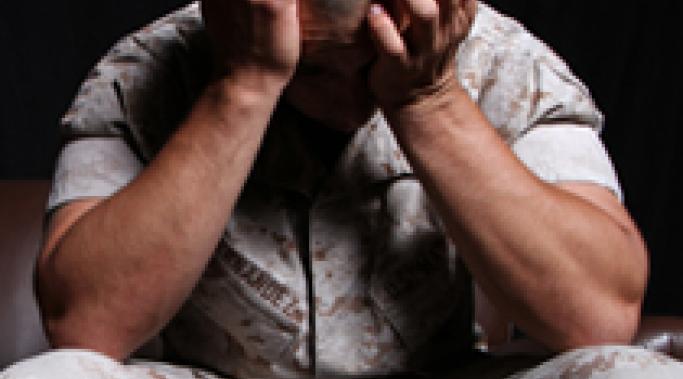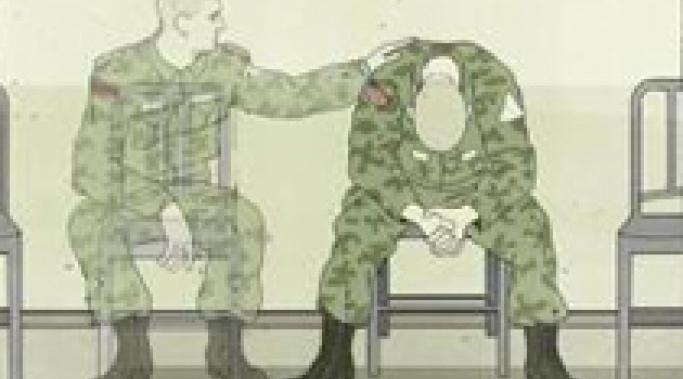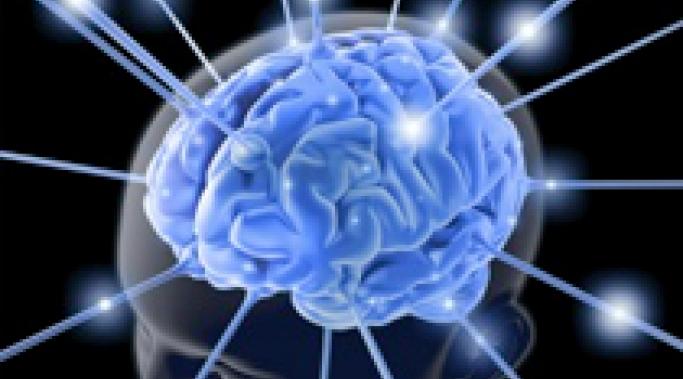A while back I wrote an article on how symptoms of combat posttraumatic stress disorder (PTSD) can be seen in the children of veterans. Not surprisingly, PTSD symptoms can also be seen in some spouses of those with combat PTSD, even though the spouse never directly went through the trauma the veteran did. This is often known as secondary traumatic stress or secondary traumatic stress disorder.
Understanding Combat PTSD
For the past few posts I’ve been talking about the symptom clusters of combat posttraumatic stress disorder (PTSD). Today I will talk about the final category of PTSD symptoms: hyperarousal.
The four categories of posttraumatic stress disorder (PTSD) symptoms are re-experiencing, avoidance, negative changes in thoughts and beliefs and hyperarousal (feeling keyed up). I’ve talked about the first two categories already and, so, today I want to discuss the changes in thoughts and beliefs associated with combat PTSD.
As I mentioned last time, the symptoms of combat posttraumatic stress disorder (PTSD) fall into four categories that include: re-experiencing, avoidance, negative changes in beliefs and feelings and hyperarousal. Today I want to talk about the combat PTSD symptoms that fall into the avoidance category.
The symptoms of combat posttraumatic stress disorder (PTSD) fall into four categories:
Re-experiencing
Avoidance
Negative changes in beliefs and feelings
Hyperarousal (feeling "keyed up")
Today I want to talk about the first one: re-experiencing.
If you’ve returned home from a combat zone, you have likely experienced trauma, and almost all people who have experienced a trauma have some posttraumatic stress disorder (PTSD) symptoms as a result; however, this does not necessarily mean that you have combat PTSD. In order to be diagnosed with combat PTSD, a formal assessment must be made by a healthcare professional and you must have a set number of symptoms that raise to a certain level of severity. You cannot determine, yourself, if you have a diagnosis of PTSD.
There are changes in the brain in someone with combat PTSD and the symptoms they have fall into the categories of:
Re-experiencing – a reliving of the past event
Avoidance – avoidance of situations that remind you of the traumatic event
Arousal – a feeling of being “keyed up” and always on the lookout for danger
Negative changes in beliefs and feelings
Unfortunately combat posttraumatic stress disorder (PTSD) and substance use disorders go hand-in-hand for many people. In 2008, almost 22% of Veteran’s Administration (VA) patients were also diagnosed with a substance use disorder and in those hospitalized for PTSD, 70% also had a substance use disorder. And research shows that those who are diagnosed with both disorders have poorer long-term outcomes than those who are diagnosed with either one alone.
However, there are treatment process recommendations that can improve the outcomes of combat PTSD and comorbid (co-occurring) substance use disorders.
Returning from a deployment can be challenging in many ways and Vet Centers can help. Vet Centers are there to help combat veterans and their families through counseling, outreach and referrals. If you’re suffering from combat posttraumatic stress disorder (PTSD) or are experiencing other difficulties after returning from deployment, you should definitely look into these services which are always free and confidential.
Like with all mental illnesses, what happens in the brain to cause combat-related posttraumatic stress disorder (PTSD) cannot fully be explained; nevertheless, there are many things that we do know. We do know what parts of the brain are involved in a stress response and we do know what neurotransmitters are involved and the types of medication that can be used to correct some of those systems.
As I’ve mentioned previously, medication and psychotherapy (such as prolonged exposure therapy) both have a place in the treatment of combat posttraumatic stress disorder (PTSD). However, there are additional therapies that can help veterans. One such type of therapy is mindfulness-based. You might have heard of this as mindfulness meditation and you might have thought that meditation wasn’t right for you, but mindfulness is much more than that and a 2013 study shows that veterans found mindfulness-based therapy was accepted by, and effective for, veterans with combat PTSD (more below).









